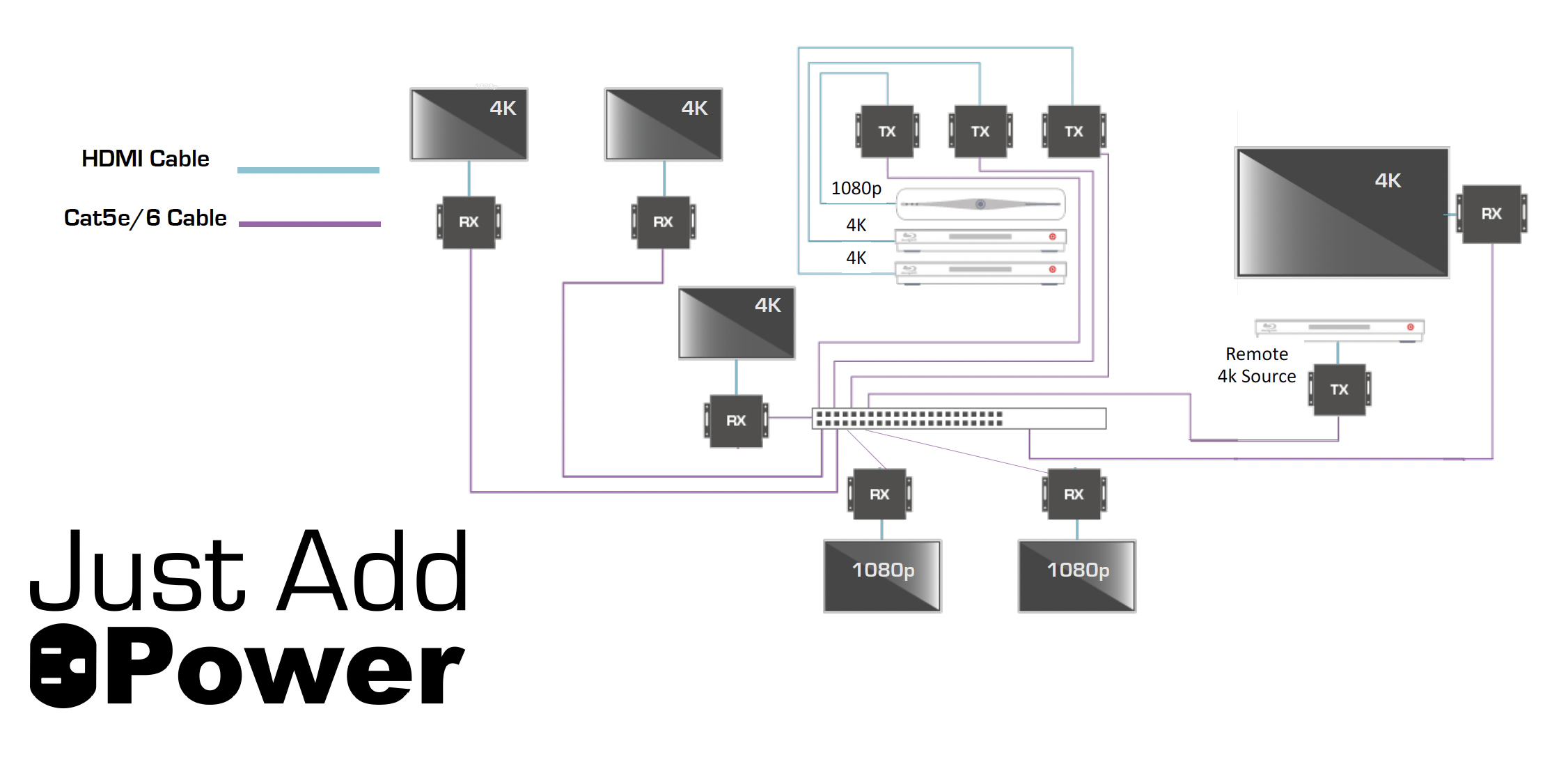Multicast switching isn’t the flashiest subject to talk about in a world rippling with high-speed technology developments, but it’s an important one that AV professionals would be remiss to overlook as AV-over-IP video distribution becomes the foundation of an infinite number of installations. We’re seeing all AV markets—from bars and restaurants to houses of worship, casinos, universities, and corporations—deploy a growing number of displays. These displays need to be connected to a variety of sources, allowing their function to switch between providing entertainment, signage, or information to visitors and employees. As a result, AV professionals have become experienced at installing AV-over-IP systems utilizing VLAN switching, reaping the benefits in both cost and labor. Now we’re seeing more interest in utilizing IP multicast switching as an option. The advantages of multicast have traditionally been enjoyed in the broadcast industry, but it has its place in the AV world as well. As such, it now demands installers develop more expertise and understanding of when multicast switching should be used versus VLAN switching.
For most installs, VLAN switching is still the best option. Here, a canned driver communicates directly with the switch to route video traffic. The out of the box experience is simple. The best VLAN switches will isolate each video stream on the network, so there’s no sifting through packets and managing complex Internet Group Management Protocol (IGMP) membership messages that are necessary in a multicast setup. VLAN switching schemes usually switch faster because it’s more a controlled environment and there’s less likely to be bandwidth issues. For AV professionals, VLAN switching requires very little networking knowledge.
The Case for Multicast

"Multicast switching opens options up for IT so that AV and IT devices and sources can be comingled on the network, which is more prevalent in corporate and large venue applications." Stricklin, Just Add Power
Multicast switching operates differently. A multicast switch is responsible for communicating with every receiving device that wants to access the video stream and telling it what it should be doing. In more complex terms, receiving devices send what is called an IGMP message, which tells the network which source they want information from. Those messages include a join message, which allows a device to subscribe to a multicast stream, and a leave message, which tells the switch to unsubscribe it from the stream. Source devices respond by sending data to the network only once, regardless of the number of subscribed receiving devices. The switch replicates the data so that each subscribed receiving devices gets a copy. The benefit is that this prevents unnecessarily burdening devices that do not need the data.
Multicast switching opens options up for IT so that AV and IT devices and sources can be comingled on the network, which is more prevalent in corporate and large venue applications. There’s still a great out of the box experience, but deployment is more involved. In some ways, it can be simpler, especially for IT because they can use a switch they’re already comfortable with and there are fewer requirements. The tradeoff, however, is that the installer is responsible for configuring it properly, which can be a hurdle for AV professionals.
The environments where multicast switching makes more sense are large hospitals, stadiums, casinos, and sports and entertainment venues. These have an infrastructure already in place that can be leveraged and is familiar to IT. A video wall in a sports bar, retail store, or a command-and-control center will typically still rely on VLAN switching.
[ New Just Add Power Driver Supports Luxul Gigabit Switches ]
When selecting multicast switching, there are a few best practices to optimize the system for AV over IP video distribution. First, ensure that the switch selected has a high enough amount of bandwidth. Second, ensure it has enough PoE power to power all devices. Finally, it needs to have a large enough backplane bandwidth to manage all the video traffic.
From a manufacturing perspective, many manufacturers are siloed and only offer multicast switching. In addition, most will have a very complex set of steps. However, with the right software, AV professionals can quickly step through multicast scenarios for configuring drivers and automate the mundane IT/IP configuration portion. In this way it can be a bridge, allowing AV and IT professionals a more organized and comfortable approach. For example, every display in each room or the video wall in the lobby can be named to match plans, blueprints, and control schematics. This makes it easier and less time consuming for AV integrators, makes IT departments feel more comfortable, and ensures users can easily select and control source content for every screen—no matter how it’s happening on the AV-over-IP backend.
[ Just Add Power Launches Remote Installation Training Program ]

